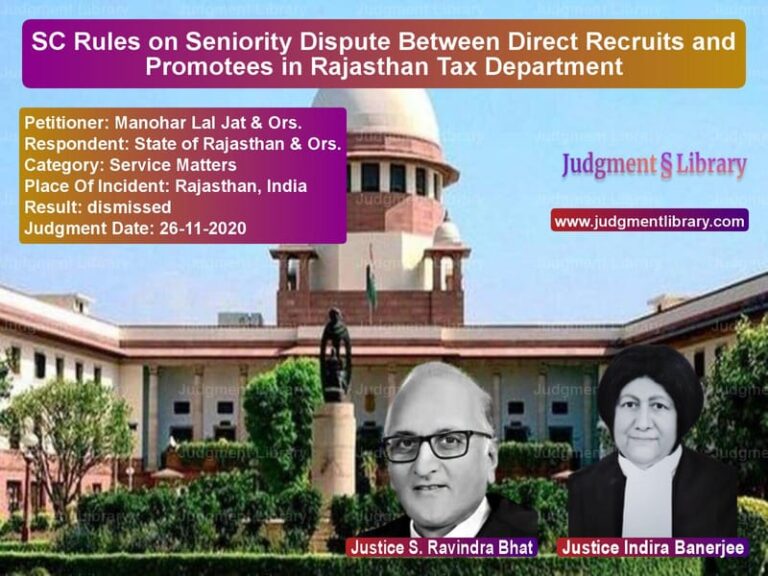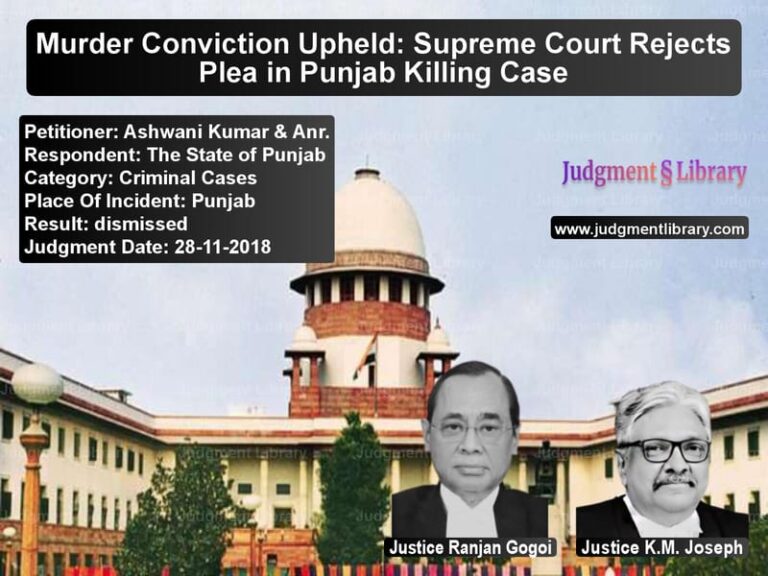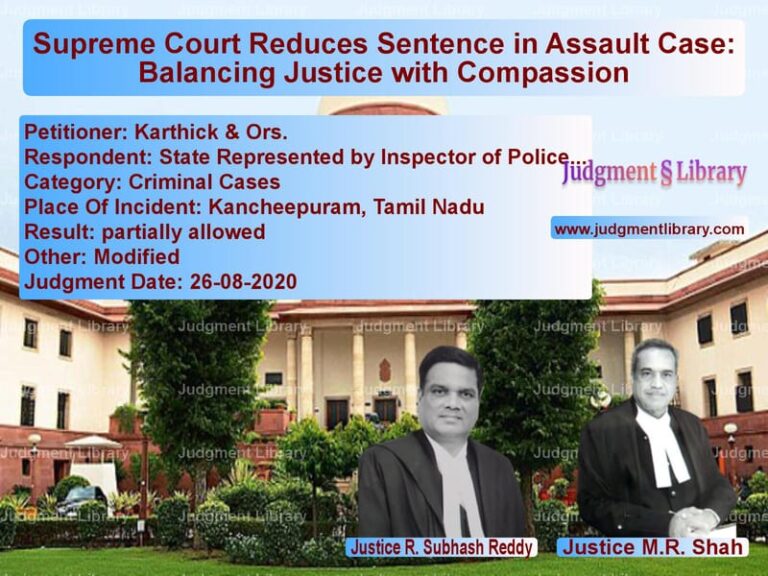Dowry Death Conviction: Supreme Court Modifies Death Penalty to Life Imprisonment
The case of State of Maharashtra vs. Nisar Ramzan Sayyed is a significant ruling addressing dowry death, domestic violence, and the sentencing criteria under IPC. The Supreme Court was called upon to review whether the conviction of the respondent under Section 302 IPC warranted the death penalty or if life imprisonment was a more appropriate punishment.
The case originated from the tragic death of Summayya Sayyed, who was set on fire by her husband, the respondent Nisar Ramzan Sayyed, after a prolonged period of harassment over dowry demands. Her three-year-old son was also thrown onto the flames, and the victim, who was seven months pregnant, succumbed to her injuries on November 3, 2010. The trial court sentenced the respondent to death, but the High Court overturned the verdict, leading to an appeal before the Supreme Court.
The Supreme Court ultimately ruled that the case did not fall under the ‘rarest of rare’ category and commuted the death sentence to life imprisonment until natural death.
Background of the Case
The prosecution’s case was built on the following key facts:
- The victim, Summayya Sayyed, was married to the accused in March 2007.
- Initially, she was treated well, but after one year, the accused began harassing her for Rs. 50,000 to purchase an auto-rickshaw.
- On the morning of October 29, 2010, at 5:00 a.m., the accused poured kerosene on the victim and set her on fire.
- Her three-year-old son, Sayej, was thrown onto the burning body.
- The accused took Summayya to the hospital, where she later died of burn injuries.
- Her son died on the spot, and she also suffered the loss of her unborn child.
Trial Court Judgment
The trial court convicted the accused under Sections 302 and 498-A IPC and sentenced him to death on September 22, 2011. The court justified the verdict on the following grounds:
- The cruelty inflicted upon the deceased was unimaginable.
- The act of throwing a child onto the burning mother demonstrated extreme brutality.
- There were multiple dying declarations that consistently implicated the accused.
- The case fell within the ‘rarest of rare’ category, justifying the death penalty.
High Court Judgment
On appeal, the Bombay High Court reviewed the evidence and ruled in favor of the accused, acquitting him. The key reasons for the acquittal were:
- The prosecution relied solely on the dying declarations of the victim.
- There were inconsistencies in the medical reports and witness testimonies.
- The case lacked direct eyewitnesses to the act of setting the victim on fire.
- The accused had taken the victim to the hospital, suggesting a possible attempt to save her.
The High Court held that the evidence did not establish the accused’s guilt beyond a reasonable doubt and acquitted him.
Supreme Court Judgment
The State of Maharashtra appealed against the High Court’s decision. The Supreme Court, comprising Justices Pinaki Chandra Ghose and Rohinton Fali Nariman, conducted a thorough review of the case.
The Supreme Court ruled as follows:
- The trial court was correct in convicting the accused based on the consistent dying declarations.
- The High Court erred in granting an acquittal, given the weight of the evidence.
- The accused’s conduct was barbaric, but it did not meet the threshold for the ‘rarest of rare’ case.
- The death penalty was replaced with life imprisonment until natural death.
Key Excerpts from the Judgment
The Supreme Court clarified the principles of sentencing in capital cases:
“The crime committed by the accused is horrific, yet in sentencing, we must distinguish between extreme brutality and cases where reform is impossible. The ‘rarest of rare’ principle must be applied cautiously.”
On the weight of dying declarations, the Court ruled:
“The consistency of the dying declarations in this case makes them reliable evidence. The High Court failed to appreciate their evidentiary value.”
Legal Precedents Considered
- Bachan Singh vs. State of Punjab (1980) – Defining the ‘rarest of rare’ doctrine.
- Machhi Singh vs. State of Punjab (1983) – Listing criteria for capital punishment.
- Paniben vs. State of Gujarat (1992) – Reaffirming the legal value of dying declarations.
Implications of the Judgment
- The ruling clarifies the evidentiary value of dying declarations.
- It reinforces the principle that capital punishment should be used sparingly.
- The decision strengthens legal protections against dowry-related violence.
- The ruling highlights the judiciary’s approach to sentencing in cases of domestic violence leading to murder.
Conclusion
The Supreme Court’s ruling in State of Maharashtra vs. Nisar Ramzan Sayyed provides a critical precedent in cases of dowry-related deaths. While affirming the conviction, the Court acknowledged the role of mitigating circumstances and ensured that justice was served with a balanced approach to sentencing. The decision strengthens protections against domestic violence while upholding the principle that death penalty should be imposed only in extreme cases.
Don’t miss out on the full details! Download the complete judgment in PDF format below and gain valuable insights instantly!
Download Judgment: State of Maharashtra vs Nisar Ramzan Sayyed Supreme Court of India Judgment Dated 07-04-2017.pdf
Direct Downlaod Judgment: Direct downlaod this Judgment
See all petitions in Murder Cases
See all petitions in Dowry Cases
See all petitions in Domestic Violence
See all petitions in Judgment by Pinaki Chandra Ghose
See all petitions in Judgment by Rohinton Fali Nariman
See all petitions in partially allowed
See all petitions in Modified
See all petitions in supreme court of India judgments April 2017
See all petitions in 2017 judgments
See all posts in Criminal Cases Category
See all allowed petitions in Criminal Cases Category
See all Dismissed petitions in Criminal Cases Category
See all partially allowed petitions in Criminal Cases Category






